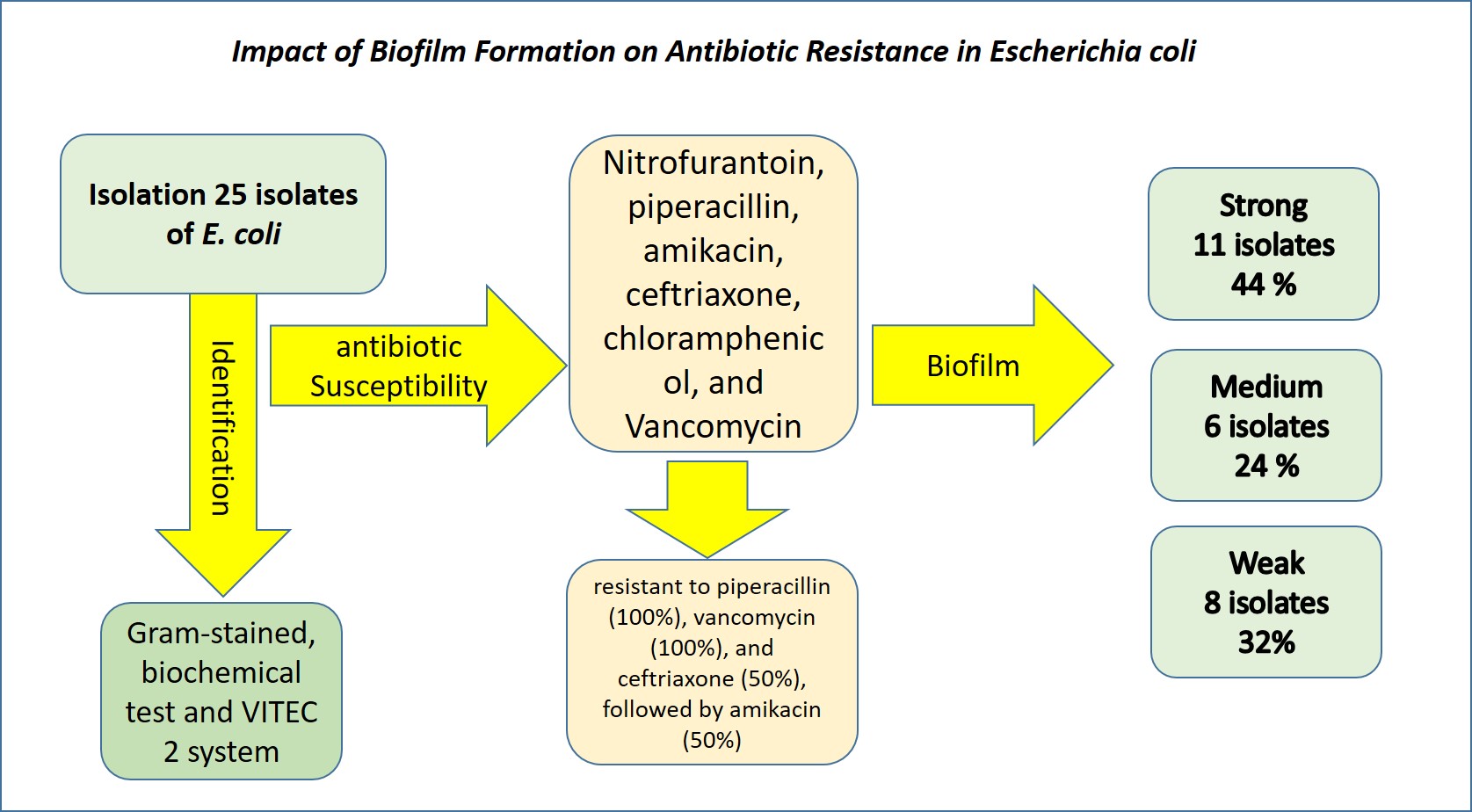Impact of Biofilm Formation on Antibiotic Resistance in Escherichia coli
Keywords:
Antibiotic resistance, Biofilms, Escherichia coli, Urinary tract infection, Virulence Factors.Abstract
Escherichia coli is a main nonpathogenic bacterium naturally present in the human gut. However, certain strains have adapted to cause infections, leading to illnesses in the gastrointestinal tract, urinary system, or central nervous system, even in otherwise healthy individuals. The study focused on the role of biofilm formation on resistant isolate of E. coli. Biofilms can be defined as groups of microorganisms attached to a surface. In this study 25 strains of E. coli have been used, the isolates have been detected by using Gram-stained, biochemical test and VITEC 2 system, As for antibiotic resistance, six antibiotics have been used, nitrofurantoin, piperacillin, amikacin, ceftriaxone, chloramphenicol, and Vancomycin. The concentrations have been used according to the clinical and Laboratory Standard Institute (CLSI). Biofilm Assay Protocol was used. All isolates exhibited sensitivity to nitrofurantoin and chloramphenicol, but they were resistant to piperacillin (100%), vancomycin (100%), and ceftriaxone (50%), followed by amikacin (50%). Biofilm production of 25 E. coli isolates showed that 25 isolates were able to form a biofilm, 11 isolates indicated a strong reaction, 6 were medium and 8 of them were weak biofilm production. Among isolations creating biofilm more than 44 % of bacteria exhibit strong biofilm production, 24% moderate, and less than 32 % weak biofilm production.

Downloads
Published
Issue
Section
License

This work is licensed under a Creative Commons Attribution-NonCommercial-NoDerivatives 4.0 International License.



